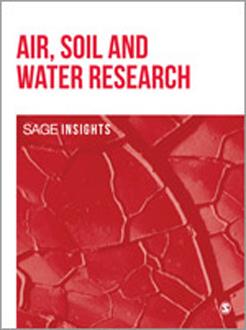Airborne particulates play a significant role in the atmospheric radiative balance and impact human health. To characterize this impact, global-scale observations and data products are needed. Satellite products allow for this global coverage but require in situ validations. This study used a remote-controlled aerial vehicle to look at the horizontal, vertical, and temporal variability of airborne particulates within the first 150 m of the atmosphere. Four flights were conducted on December 4, 2014, between 12:00 pm and 5:00 pm local time. The first three flights flew a pattern of increasing altitude up to 140 m. The fourth flight was conducted at a near-constant altitude of 60 m. The mean PM2.5 concentration for the three flights with varying altitude was 36.3 µg/m3, with the highest concentration occurring below 10 m altitude. The overall vertical variation was very small with a standard deviation of only 3.6 µg/m3. PM2.5 concentration also did not change much throughout the day with mean concentrations for the altitude-varying flights of 35.1, 37.2, and 36.8 µg/m3. The fourth flight, flown at a near-constant altitude, had a lower concentration of 23.5 µg/m3.
How to translate text using browser tools
1 January 2020
Using Remote Control Aerial Vehicles to Study Variability of Airborne Particulates
William A. Harrison,
David J. Lary,
Brian J. Nathan,
Alec G. Moore

Air, Soil and Water Research
Vol. 8 • No. 1
January 2015
Vol. 8 • No. 1
January 2015
air quality
PM2.5
UAV
vertical variability




